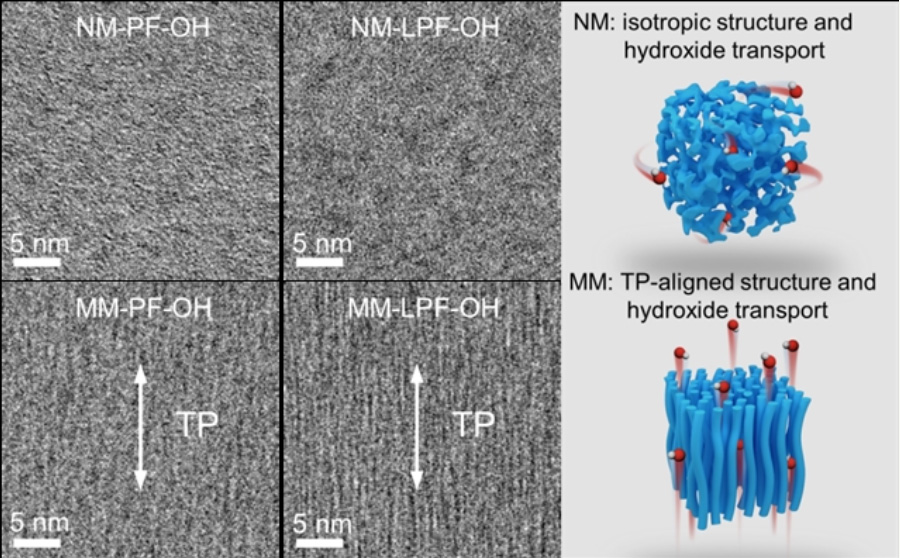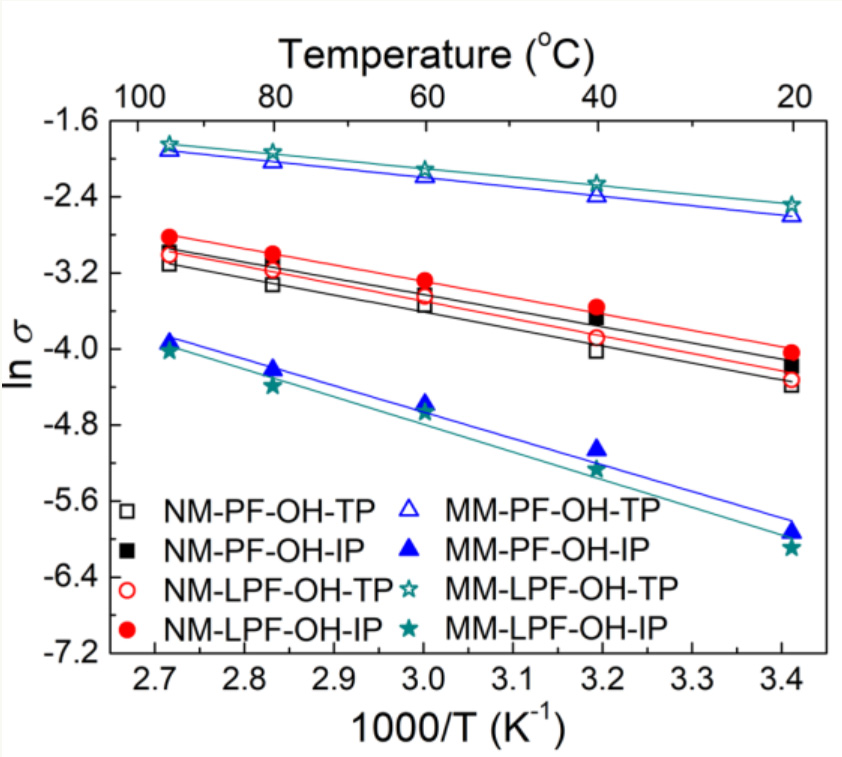
A research team led by Prof. YIN Yan from Tianjin university, also user of the Steady High Magnetic Field Facility (SHMFF), successfully developed oriented ferrocenium anion exchange membrane with the aid of the SM1 superconducting magnet in SHMFF of The High Magnetic Field Laboratory, Hefei Institutes of Physical Science (HFIPS), Chinese Academy of Sciences.
The results were published in Nature Energy.
Anion exchange membrane fuel cell (AEMFC) is a promising next generation of fuel cell technology due to use of non-noble metal catalysts and stronger oxygen reduction activity in alkaline conditions. As a core component, the anion exchange membrane (AEM) is crucial to the AEMFC power output and performance stability.
However, most AEMs exhibit isotropic anion conductivity, and common strategies such as phase separation can't effectively enhance the through-plane (TP) anion conductivity.
To solve this problem, the team used a magnetic field, in this research, to construct TP- oriented anion transport channels in the paramagnetic ferrocenium AEM. This strategy follows their previous progress in the research of proton exchange membranes. They extended materials with both magnetic responsiveness and ion conductivity to AEM.
They successfully obtained TP-oriented PF-OH and LPF-OH AEMs from paramagnetic polymer by solution casting under a magnetic field of 9T. These magnetic-cast membranes (MM) were denoted MM-PF-OH and MM-LPF-OH.
Normal-cast membranes (NM) without a magnetic field are denoted NM-PF-OH and NM-LPF-OH.
The magnetic-cast membranes with TP-oriented transport channels the ion conductivity in the TP direction is substantially higher than that in the IP direction. In addition, the σTP/σIP ratio was higher for MM-LPF-OH than MM-PF-OH due to the higher degree of polymer orientation as verified by TEM. Moreover, the hydroxide ion conductivity ratios of MMs versus NMs in TP reached around 3.1–6.3 at various temperatures, indicating that the TP-oriented MMs would be highly favorable towards practical AEMFC configuration.
Besides high anion conductivity, Membrane stability is crucially important for practical operation of AEMFCs. The majority of AEMs employ quaternary ammonium anion-conducting groups, which usually display inferior alkali stability, especially at high temperatures.
By forming a magnetically induced mixed-valance ferrocenium–ferrocene combined state, the alkali stability, thermal stability and redox stability of magnetic-cast membranes were substantially improved.
The applied magnetic field has dual functions, improving both the conductivity and stability of the AEMs.

Figure 1 Cross-sectional TEM images of magnetic-cast membranes (MM) and normal-cast membranes (NM), and schematic diagram for their microstructure. (Image by YIN Yan)

Figure 2 Comparative Arrhenius plots of TP and IP membrane OH?conductivity in water for magnetic-cast membranes (MM) and normal-cast membranes (NM). (Image by YIN Yan)
Magnetic-field-oriented mixed-valence-stabilized ferrocenium anion-exchange membranes for fuel cells